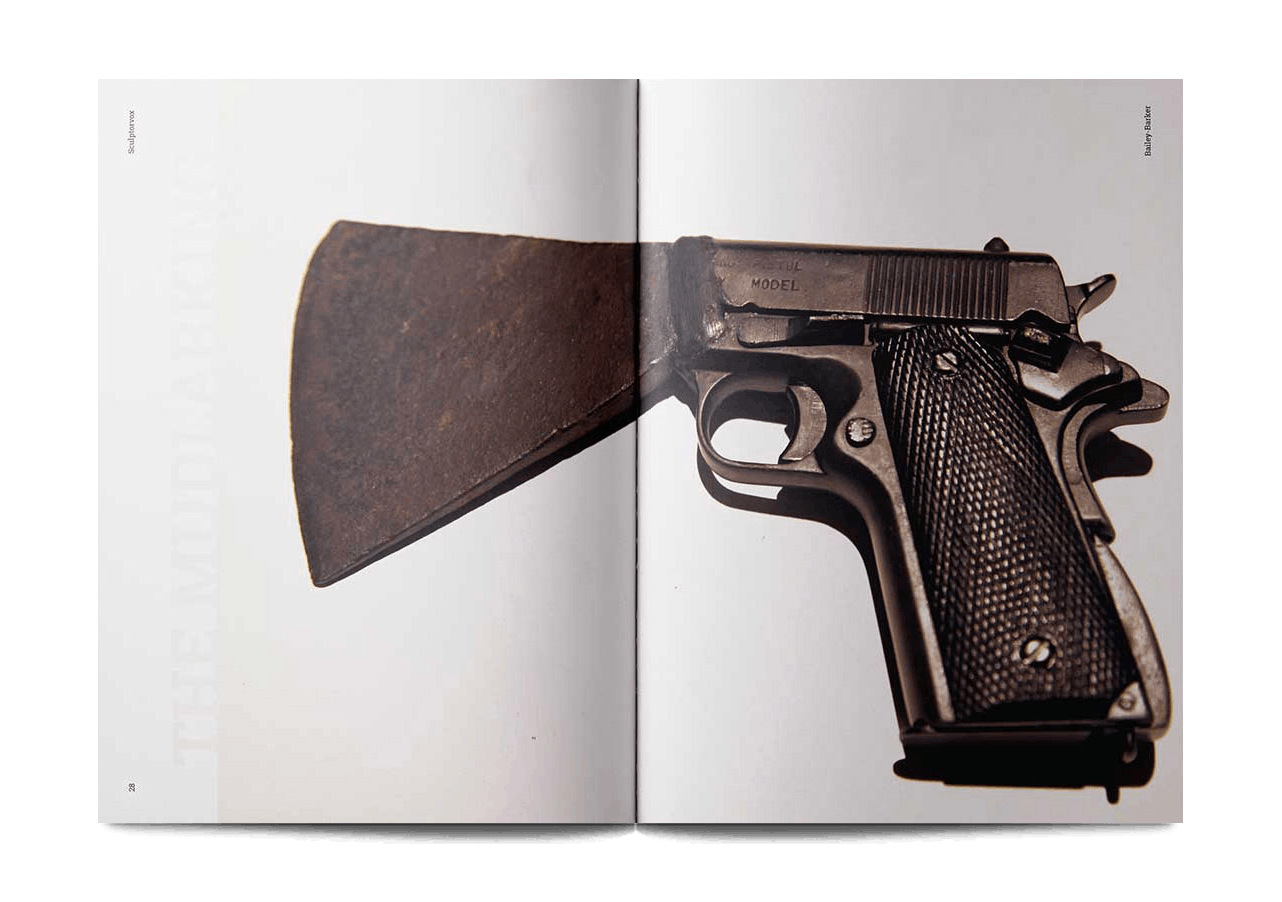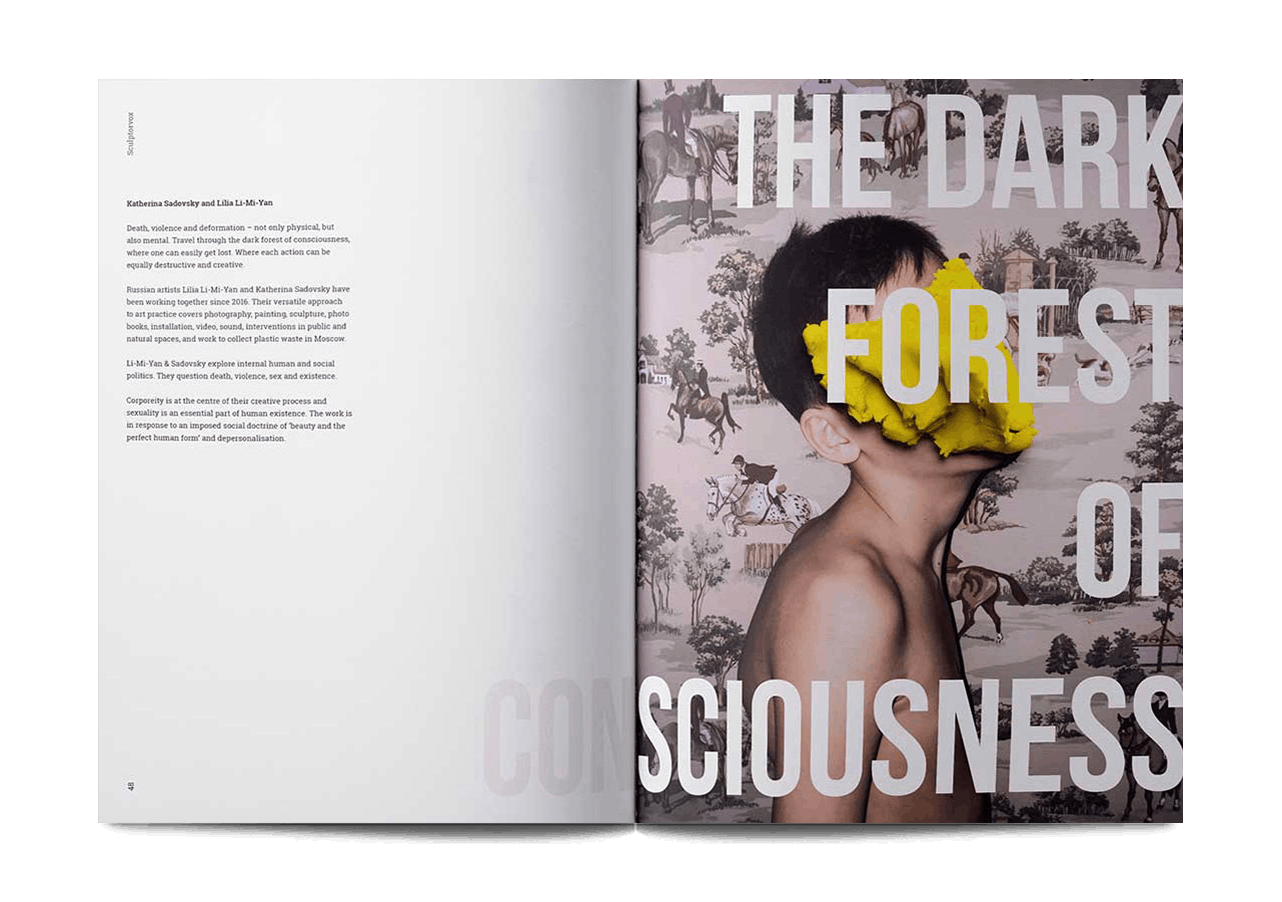Sculptorvox magazine is challenging ideas of what sculpture means

When most people talk about sculpture it tends to be the Henry Moores or the Antony Gormleys of this world that spring to mind. But there’s a much stranger and richer world of sculpture out there, and Sculptorvox is opening it up to a new audience by revealing the thoughts and processes behind the art.
We spoke to Daniel Hawley-Lingham, Sculptorvox‘s founder and editor-in-chief, about translating three dimensions to printed pages, the potential power of sculpture in an ever-more politically aware world, and bringing a niche art form to a wider audience.
Sculpture magazines are an unusual thing, even in the realm of art magazines, why do you think that is?
I love sculpture. I was a sculptor for a number of years and during that period felt there was a big gap in what was on offer in terms of published material that I wanted to read and consume. I also felt that the expanse and popularity of the subject area deserved an interesting and engaging platform. It still remains a niche within the mind of most people when you talk about art and we still have some old-fashioned notions about what sculpture is. I think that, in part, makes it difficult to create something inspiring, contemporary and sustainable on the subject.
My hope is that Sculptorvox opens up that definition to include many artforms that cross categorisation and pose intriguing, engaging ideas as well as beautiful work.
Is it difficult translating something so three dimensional onto printed pages?
First of all, I would just like to mention Matt Gill — founder of the magazine platform Raw Print — has helped realise this project in the print format that we chose. His help as designer, providing art direction, has been invaluable in terms of creating a fantastic aesthetic that really does the content justice. We work hand-in-glove on each issue and it’s an amazingly enjoyable process.
You can’t really replace the experience of encountering three-dimensional work on a personal and physical basis. What we are trying to achieve in Sculptorvox is not so much the translation of the end result or the object itself but the processes involved and the mindset of the contemporary artist. This is all done through the lens of a more homogeneous sense of how sculptural artists work, often shifting between medium and experimenting with ideas and methods that will involve drawing, photography, writing, digital technology and more. The difficult part is how to select work that creates some sense of narrative throughout a particular volume, seeing what works together or what might provide juxtaposition and contrast to highlight the ideas.
Having said all that, scale is one of the hardest things to put across without interfering with the aesthetic of the artwork or the publication.
When you’re thinking about what to feature in the magazine, what do you look for?
Each volume starts with an underlying idea, a central narrative that will contain and limit the work we publish into something a little more coherent than simply putting in stuff we like. There is certainly a curatorial aspect to selecting work but it must make some sense to that central thread.
In many ways, I started the publication as a way to show the expanse, skill and awe-inspiring aspects of the work alongside ideas that might challenge, provoke or stimulate further output. I also wanted to get across the dedication involved in sustaining a career in art. You just have to look at someone like Alex Chinneck to realise the commitment, planning and finances some artists are working with. Finally, there is also the aesthetic quality of the publication itself. We, as a team, are guided by the overall look and feel in balance with the meaning behind the content.
The magazine does a lot to remind people that sculpture isn’t always what most commonly comes to mind. It’s a beautiful publication, but also seems to serve a pretty vital purpose for the medium.
I hope that’s that case. What I wanted was an intelligent look at the realm of the artist and the output of their work – not just as an end result, but as a start, a process, and a work of art.
I think this is where sculptorvox departs from other magazines about art. The focus for Sculptorvox is not on the popularity, or simply the beauty, but on the life one leads to be an artist; the consuming passion, the ideas and the output that process requires. For many, I truly believe it’s a calling, it’s something they have to do and without it, their lives are devoid of meaning.
In that vein, what does “sculpture” as a medium mean to you?
To sculpt is to carve, cast or shape. If we take that idea to its philosophical base we create work like this in so many ways, even within a virtual realm. Taking that idea into account, a contemporary interpretation of sculpture could include many aspects of artistic output such as sounds scapes, light, digital work as well as more tangible forms such as installation, intervention, performance and of course object-based work that we traditionally know as ‘sculpture’; like a carved figure or geometric shape.
Do you think a magazine like Sculptorvox can appeal to a wider audience? I think anyone who opened it who wasn’t familiar would be surprised at exactly what falls into that category.
I would like to think it’s full of surprising content. I wanted to make something a little more accessible but not too obvious. At the heart of the series is the idea that this is the ‘sculptor’s voice’; the mindset and psyche of an artist, one that we can all relate to and one that we can all respond to. With the inclusion of work that is much broader than traditional notions of sculpture, including photography, writing, collage, installation, I think there is quite a wide appeal. It opens up the ideas around art practice, output, thoughts and methods
In a politically charged landscape do you think that sculpture has a place and a voice to be heard?
When there is a perceived large expenditure on public art it can be an easy target for criticism, often in the media. This seems to be heightened during periods of austerity where it may be seen as a luxury or superfluous. Arguably, though, it adds to a sense of place and many monumental pieces become part of an area’s identity, even after initial scepticism or even outcry. Take the Angel of the North by Anthony Gormley, for example, which was met with initial local opposition and is now considered iconic.
We also see within political regimes, when major changes occur, monuments to former regimes are toppled and broken and new ones erected. That to me is sculpture in the obvious sense, used as an identifier, and like any art form can be politically driven at whatever level or scale it’s produced. Whether it’s heard or not is probably down to the who, rather than what. I expect many of us have seen some sculpted effigy of Donald Trump, how effective that is I am not sure.









